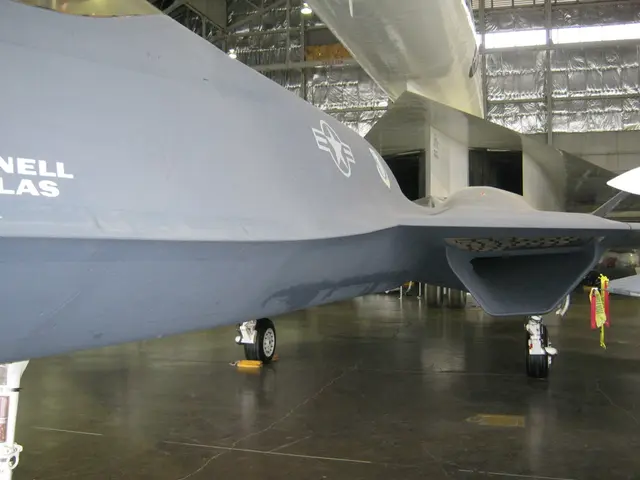Landing an Instrument Approach by Circling Method
In the world of aviation, circling minimums play a crucial role in ensuring the safety of pilots during instrument approaches that do not align with a specific runway. These minimums, comprising minimum descent altitude (MDA) and required visibility, provide essential protections for pilots, as outlined below.
Key Protections of Circling Minimums -------------------------------------
1. **Guaranteed Obstacle Clearance:** The Federal Aviation Administration (FAA) defines a protected area around the airport for circling maneuvers. This area guarantees at least 300 feet of obstacle clearance for all pilots, regardless of the approach year. For approaches developed or revised after 2012, the protected area has been expanded, further enhancing safety.
2. **Tailored to Terrain and Runway Configuration:** Circling minimums are especially important at airports where terrain or runway layout prevents a straight-in approach. Pilots may descend only to the MDA until visual contact is made; if visual reference is lost, a missed approach must be initiated immediately.
3. **Designated by Approach Type:** Circling-only approaches are distinguished by a letter (e.g., VOR-A, RNAV-B), indicating that only circling landing minimums are published—meaning no straight-in landing is possible.
Key Factors When Maneuvering to Land from a Circling Approach ---------------------------------------------------------------
Pilots must consider several critical factors to execute a safe circling maneuver:
1. **Maintain Visual Contact:** The pilot must have and maintain visual contact with the airport environment at all times while maneuvering for landing. If visual reference is lost, a missed approach is required.
2. **Descent Management:** Circling should resemble a normal traffic pattern as much as possible for familiarity. It is often prudent to level off at traffic pattern altitude if weather permits, rather than descending all the way to the circling MDA prematurely, to maintain safer pattern geometry and power settings.
3. **Terrain Awareness:** At mountainous or otherwise challenging airports, terrain may dictate specific maneuvering and descent paths. Pilots must be especially vigilant to avoid controlled flight into terrain (CFIT).
4. **Speed and Configuration Management:** Aircraft should remain in a clean configuration for as long as practical, with speed adjustments kept minor during the approach. After passing a point 7 km (4 nm) from the threshold, speed control should generally cease to allow a stabilized approach.
5. **Visibility and Ceiling:** Low ceilings and poor visibility increase the risk of spatial disorientation. If conditions are marginal, consider going missed early rather than attempting to salvage a deteriorating visual situation.
6. **Direction of Circling:** For better visibility, prefer circling to the side with the best cockpit view (e.g., right turns from the right seat).
7. **Missed Approach Planning:** Pilots must be prepared to transition smoothly to a missed approach at any point if visual reference is lost or the landing cannot be completed safely.
Summary Table: Circling Approach Factors -----------------------------------------
| Factor | Purpose/Consideration | |-----------------------|---------------------------------------------------------| | Circling Minimums | Ensure obstacle clearance and visibility | | Visual Reference | Mandatory for descent below MDA; lost = go missed | | Pattern Familiarity | Maneuver similar to normal traffic pattern if possible | | Terrain Awareness | Critical at mountainous or complex airports | | Speed/Configuration | Clean config as long as possible, minor speed changes | | Ceiling/Visibility | Go missed early if conditions deteriorate | | Circling Direction | Prefer best cockpit visibility | | Missed Approach | Always be prepared to execute |
Circling approaches are inherently more complex and riskier than straight-in approaches. Pilots must rigorously apply instrument procedures, maintain situational awareness, and always prioritize safety over expediency.
- In the aerospace industry, circling minimums play a vital role in providing clearance and ensuring safe landing for pilots during instrument approaches that do not align with a specific runway, offering essential protections like guaranteed obstacle clearance and minimum descent altitude (MDA) for all.
- For approaches developed or revised after 2012, the Federal Aviation Administration (FAA) has expanded the protected area surrounding airports, enhancing safety during circling maneuvers.
- circling minimums are particularly important at airports with terrain or runway layouts that prevent straight-in approaches, as pilots can only descend to the MDA until visual contact is established, with a missed approach necessary if visual reference is lost.
- In the aviation world, circling-only approaches are denoted by letters like VOR-A and RNAV-B, indicating that only circling landing minimums are published, making a straight-in landing impossible.
- To execute a successful circling maneuver, pilots must maintain constant visual contact with the airport environment, initiate a missed approach if visual reference is lost, and consider factors such as pattern familiarity, terrain awareness, speed and configuration management, visibility, and ceiling conditions.
- Circling maneuvers at mountainous or challenging airports require pilots to be especially vigilant to avoid controlled flight into terrain (CFIT).
- During a circling approach, pilots should aim for a clean configuration as long as practical, manage speed adjustments carefully, and maintain safer pattern geometry and power settings.
- In the finance sector, the complexity and risks associated with circling approaches necessitate rigorous application of instrument procedures, situational awareness, and an unwavering commitment to prioritizing safety over expediency.








